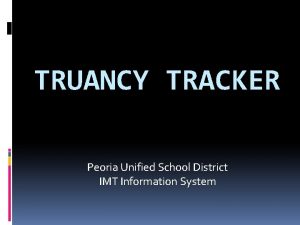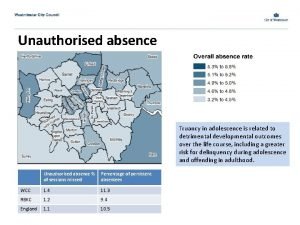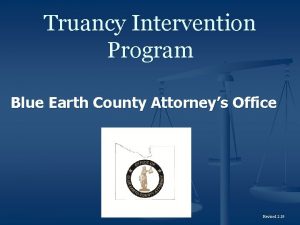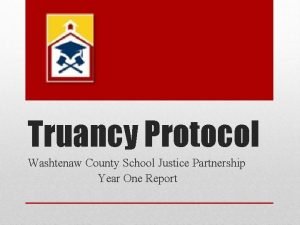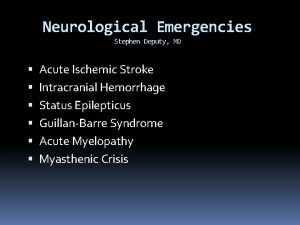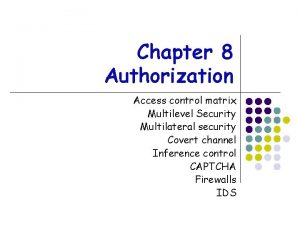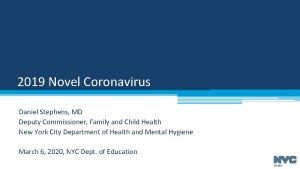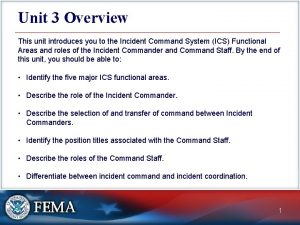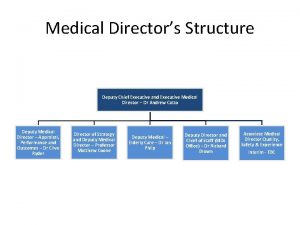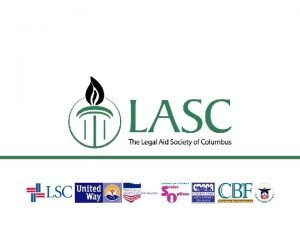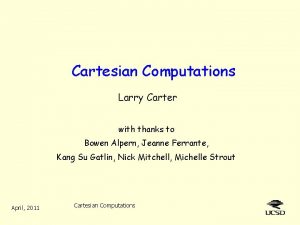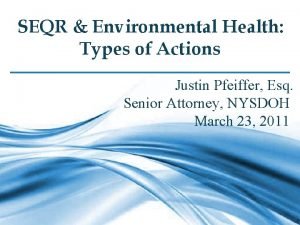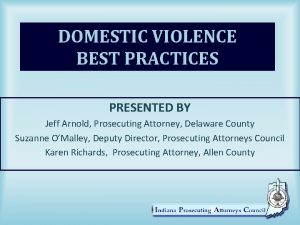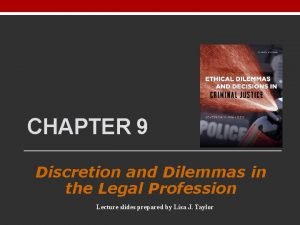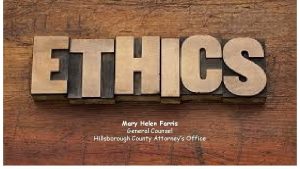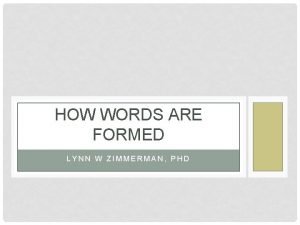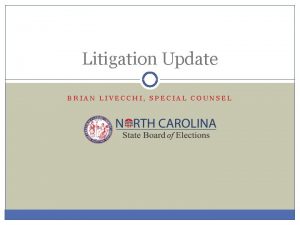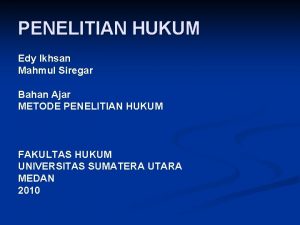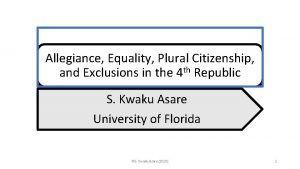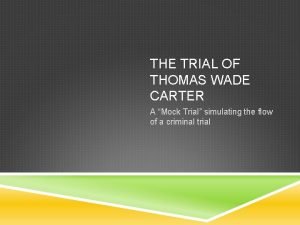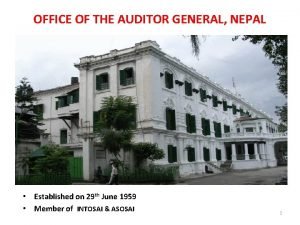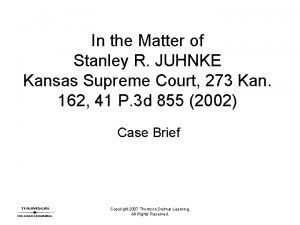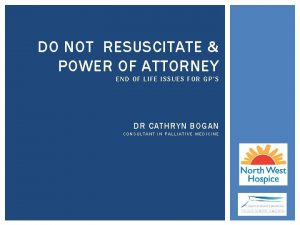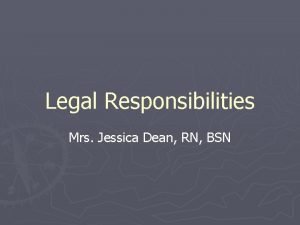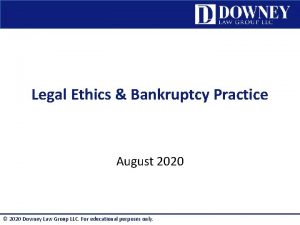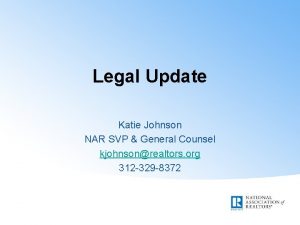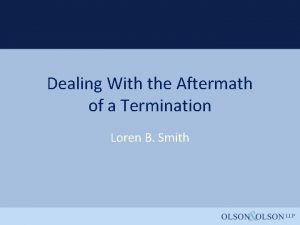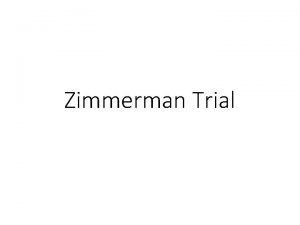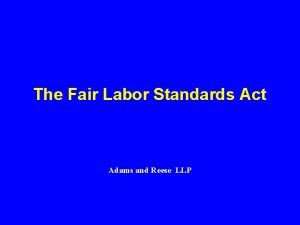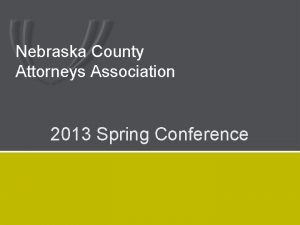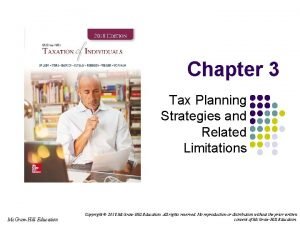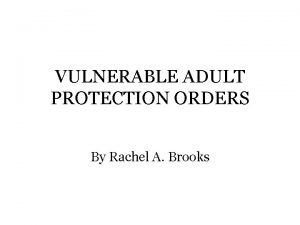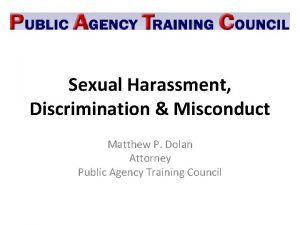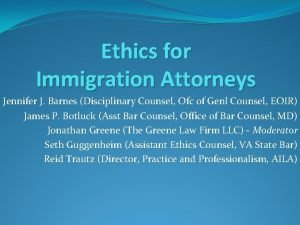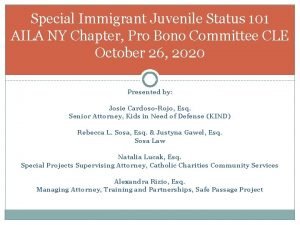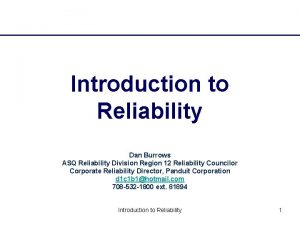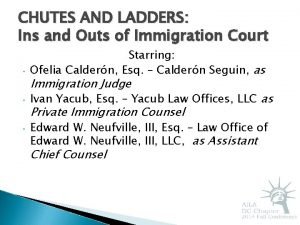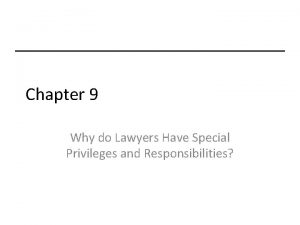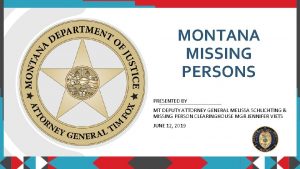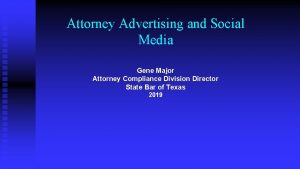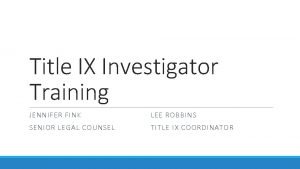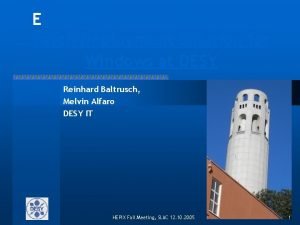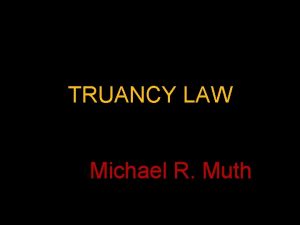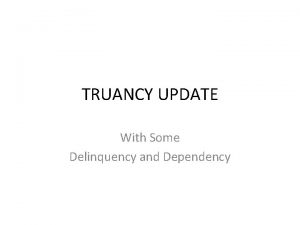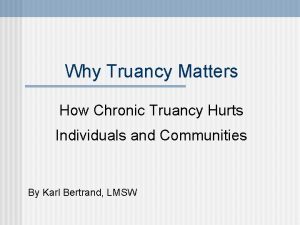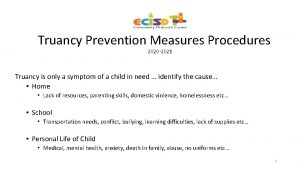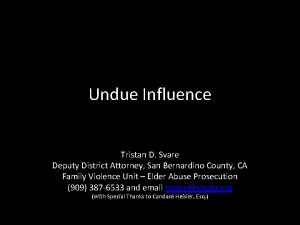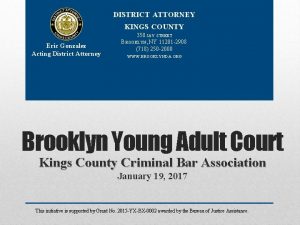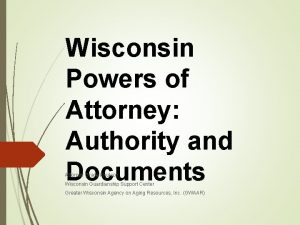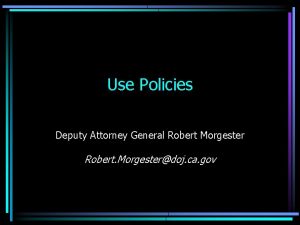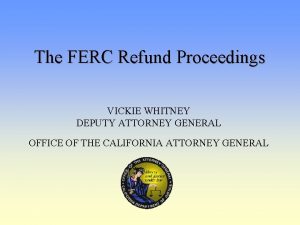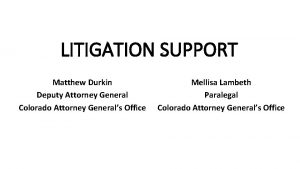TRUANCY UPDATE Michael R Galantino Deputy District Attorney





















































































- Slides: 85

TRUANCY UPDATE Michael R. Galantino Deputy District Attorney Chief – Special Victims Division Delaware County, PA Galantinom@co. delaware. pa. us

The Scope of the Problem § Between 2007 and 2010: § Total number of truancy citations increased by 16% § (66, 307 to 77, 261) § Number of truancy citations filed against juveniles increased by 28. 4% § (17, 852 to 22, 922) 2

The Scope of the Problem § Between 2007 and 2010: § Number of juveniles certified to Court of Common Pleas for failure to pay fines increased by 23% § (4, 542 to 5, 616) § But – amount of fines collected dropped by 24. 2% § ($1. 589 million to $1. 2 million) 3

The Scope of the Problem Percentage of citations filed against: 2007 27% 73% 2010 Juvenile Parent or Guardian 30% 70% Juvenile Parent or Guardian 4

Truancy Rates and Total Number of Truants by County SY 2010 -2011 5

Habitual Truancy Rates 2008 to 2011 Total School Population Total Habitually Truant Percent Habitually Truant 2008 1, 801, 760 137, 009 7. 6% 2009 1, 787, 351 142, 281 7. 96% 2010 1, 780, 413 124, 272 6. 98% 2011 1, 779, 145 169, 057 9. 5% 6

Truancy Rates by Gender School Population by Gender 49% 51% Male Female Habitually Truant by Gender 48% 52% Male Female 7

Compulsory Attendance From entry – no later than age 8 – until age 17 or graduation, whichever occurs first. § Minimum of 180 days of instruction for students. (or equivalent in hours) § Applies to children having a legal residence in Pennsylvania § § 22 Pa. Code. Chapter 11 8

Compulsory Attendance § Nonresident children living in facilities or institutions. § Licensed shelter, group home, maternity home, residence, facility, orphanage or other institution for the care or training of children or adolescents, § Covers school age children living at or assigned to the facility or institution and who are residents of the district or another school district in this Commonwealth. 9

Compulsory Attendance § Kerstetter decision: § “Once a parent/guardian elects to enroll a child in a public kindergarten program offered by a school district, § the child has “entered school” and it is the duty of the parent or guardian to comply with Pennsylvania's compulsory school. ” § Com. v. Kerstetter, --- A. 3 d ----, 2014 WL 2723025 (Pa. , 2014) June 16, 2014 10

Compulsory Attendance § Analysis of Kerstetter § Twin five year-old girls § Previously enrolled in kindergarten while in custody of CYS. § Returned to mother and re-enrolled in kindergarten in local district. § Unexcused absences in November & December. 11

Compulsory Attendance § Analysis of Kerstetter § Definition of “compulsory school age” § Entry into school, not later than age 8 years, until the age of 17 years (24 P. S. § 13 -1326) § is clearly inconsistent with the language of 22 Pa. Code § 11. 13 § A beginner is a child who enters a school district’s lowest elementary school grade that is above kindergarten. 12

Compulsory Attendance § Kerstetter does not address “Withdraw and Wait” scenario § “It has not been argued to us, nor is it apparent, that the School Code is being enforced in Pennsylvania in a fashion that prevents parents from formally withdrawing their children from kindergarten; § nor should this Opinion be read as approving (or disapproving) of such a practice. ” 13

Compulsory Attendance § Exceptions § Students who are lawfully employed part-time, or § officially enrolled in a postsecondary institution part-time. § 22 Pa. Code. Chapter 11 14

Compulsory Attendance § Exceptions § Attendance at a private trade or business school, or § a postsecondary institution full-time prior to graduation from high school, or § a school operated by a bona fide church or other religious body which provides a minimum of 180 days of instruction for students. (or equivalent in hours). 15

Compulsory Attendance § Exceptions § Age 16 and regularly employed with a valid employment certificate. § Children who are unable to profit from further public school attendance § Must be examined by an approved professional and § excused by the school board 16

Compulsory Attendance § Exceptions § Children with an approved permit to engage in farm work or domestic service in a private home and are either: § Age 15, or § Age 14 and satisfactorily completed the equivalent of the highest grade of elementary school in their district 17

Compulsory Attendance § Exceptions § Participation in a Department approved alternative program operated by a public school or a private alternative education institution § Privately tutored or home schooled students 18

Home-Schooled Students Requires notarized affidavit of the parent or guardian, filed prior to the start of the home education program and annually thereafter on August 1 § Must set forth: § § Name of the supervisor responsible for the provision of instruction; § Name and age of each participating child; 19

Home-Schooled Students § Address and telephone number of the site; § Confirmation that required subjects are offered in the English language, § Outline of proposed education objectives by subject area; § Evidence that the child has been immunized and has received required health and medical services. 20

Home-Schooled Students Required to attend same number of hours/days as traditional students § Requires specific subjects outlined in 22 Pa. Code § 4. 23 § Supervisor must maintain documentation for each student. § �A portfolio of records and materials. (log of reading materials used, writing samples, worksheets, workbooks, etc. ) 21

Home-Schooled Students § In grades 3, 5 and 8 – results of standardized achievement tests in reading/language arts and mathematics or the results of Statewide tests administered in these grade levels. § These tests shall not be administered by the child's parent or guardian. 22

Home-Schooled Students § Requires an annual written evaluation of the student's educational progress as determined by a licensed clinical or school psychologist or a certified teacher or administrator. § This evaluation shall also be based on an interview of the child and a review of the required portfolio. 23

Home-Schooled Students § Note that penalty provisions of 13 -1333 do not apply to parents of children who are in legitimate home-schooling programs that meet the above requirements. § (See 24 P. S. § 13 -1333(d)) § School Board shall provide impartial hearing examiner to determine whether home-school requirements are met. 24

Defining Truancy § Unlawful Absence § All absences should be treated as unlawful until the school district receives a written excuse explaining the reason(s) for an absence. § Parents/guardians and students should submit a written explanation within three calendar days of the absence. 25

Defining Truancy § Unlawful Absence § Parents should be advised that if they fail to provide a written excuse within three days of the absence, the absence would be permanently counted as unlawful. § Schools should immediately inform parents in writing upon each incident of unlawful absence. 26

Defining Truancy § Temporary Excused Absence § Mental, physical, or other urgent reasons § Family emergency, § Death of a family member, § Medical or dental appointments, § Authorized school activities, 27

Defining Truancy § Temporary Excused Absence § Educational travel with prior approval § Court hearings relating to county CYS or juvenile probation office § Other legal proceedings pursuant to subpoena or other court process § Tutorial instruction in a field not offered in the district’s curricula 28

Defining Truancy § Longer Term Excused Absence § Mental, physical or other urgent reasons. § May not exceed three months § Up to three months, but may be extended with PDE approval § District or school may provide homebound instruction § Homebound instruction counted for attendance 29

Defining Truancy § Public School Code § Before any proceedings are instituted against any parent for failure to comply, § the district superintendent, attendance officer, or secretary of the school board, shall give the offending person three (3) days' written notice of such violation § 24 P. S. § 13 -1333(a)(1) 30

Defining Truancy § Public School Code § “Habitually truant” = absence for more than three (3) school days (or their equivalent) following the first notice of truancy given. § 24 P. S. § 13 -1333(b)(5) 31

Defining Truancy § Pennsylvania Juvenile Act § A students who, while subject to compulsory attendance, § Is habitually and without justification absent from school § 42 Pa. C. S. A. § 6302 – Definitions: Dependent Child (5) 32

Defining Truancy Dependency cases include allegations of neglect or abuse, truancy petitions and allegations of incorrigibility. § Delinquency proceedings involve minors who have been accused of crimes. § 33

Defining Truancy § Crimes Code § Corruption of Minors § Any person who knowingly aids, abets, entices or encourages a minor younger than 18 years of age to commit truancy § First offense = summary offense § Second offense within one year = misdemeanor of the third degree. § 18 Pa. C. S. A. § 6301(a)(2) 34

Defining Truancy § Slocum decision: § Catholic priest befriended 15 year-old boy and other teens. § Built pool room in rectory. § Victim spent most of his free-time there, including some overnights § Victim caught skipping school, sneaking over to the rectory and spent the entire day with defendant. 35

Defining Truancy § Defendant knew the victim was supposed to be at school but did not contact either the school or Mother § Defendant convicted of Concealing Whereabouts of Child & Corruption of Minors (misdemeanor) § Defendant also convicted of Corruption of Minors (summary) for abetting Truancy. § Com. v. Slocum, 86 A. 3 d 272 (Pa. Super. , 2014) February 21, 2014 36

Best Practices for Truancy Reduction § Five Core Components to Address Truancy: § (1) Collaboration; § (2) Positive educational culture and climate; § (3) Early identification and intervention efforts with measurable outcomes; § (4) Tracking truancy data; and § (5) Sustainability. 37

Best Practices for Truancy Reduction § The Truancy Elimination Plan (TEP) § Developed cooperatively with involved stakeholders § School-family conference, § Recommended upon notice of third unlawful absence. 38

Best Practices for Truancy Reduction § Truancy Elimination Plan – Attendees § Student § Parent(s) (or guardian(s) § Primary teacher(s) § Guidance counselor § Other school administrator 39

Best Practices for Truancy Reduction § Truancy Elimination Plan – Attendees § If applicable: § Other family member(s) § CYS caseworker § Juvenile probation officer § Mental health services provider § Faith-based organization 40

Best Practices for Truancy Reduction § Truancy Elimination Plan § Include specific steps for progress § Measurable § Sustainable § Should be in writing, § Signed by student, parent (or guardian) and school official(s) § Copies given to all stakeholders 41

Best Practices for Truancy Reduction § The Truancy Elimination Plan (TEP) Plan of Action: § Share and review school policy on attendance and student responsibilities § Include students and families § Contacting the student’s parent/guardian upon his/her absence. 42

Best Practices for Truancy Reduction § The Truancy Elimination Plan (TEP) Plan of Action: § Meet individually with students to discuss reason(s) for absence § Follow up with the principal (or assigned truant officer) § Make referrals to guidance counselors 43

Best Practices for Truancy Reduction § The Truancy Elimination Plan (TEP) Plan of Action: § Work with Student Assistance Teams as appropriate. § Develop a collaborative plan to ensure regular school attendance § Identify, understand, and explore other issues which may contribute to truancy 44

Best Practices for Truancy Reduction § Truancy Elimination Plan – Purpose § To fully investigate (and hopefully reduce) barriers to regular school attendance § To engage student and parent(s) so that they buy into plan’s objectives § To ensure that student and family understand potential legal consequences of continued truancy. 45

Best Practices for Truancy Reduction § School Attendance Improvement Conference § Similar to Truancy Elimination Plan (TEP). § Encouraged but not required. § Several courts around the Commonwealth will not accept a truancy case unless a TEP has been attempted. 46

Best Practices for Truancy Reduction § Workgroup recommendation § whenever a child is absent 10 or more days, (medically excused or not) during a school year, § School should invite parent(s) and child to a School Attendance Improvement Conference § to address the child’s educational needs during the period of absence. 47

Best Practices for Truancy Reduction § Workgroup recommendation § If the school is able to track a child’s absences from prior years and observes a noticeable pattern of truancy or excessive tardiness, § A School Attendance Improvement Conference could be convened 48

Best Practices for Truancy Reduction § Referral to the county CYS or equivalent agency § Students less than age 13 – Mandatory § Students age 13 or older – Discretionary. § Workgroup recommends: § Schools and the county agency work collaboratively to address habitually truant students. § Amendments to Juvenile Act or DPW Regulations 49

Best Practices for Truancy Reduction § Workgroup recommendation § That a court not accept a guilty plea in advance of the summary hearing scheduled on a truancy citation. § Use the opportunity for the court to bring the child, parents, school personnel, CYS etc. together to develop strategies to improve the child’s school attendance. § Review possible pre-conviction diversionary programs. 50

Best Practices for Truancy Reduction § Workgroup recommendation § Discourage incarceration of parents for failure to pay a truancy except when all other efforts have been exhausted. § However, threats of incarceration may be effective to compel compliance with court -imposed sanctions. 51

Proposed Legislation § House Bill 2356 (Gillen) § Would eliminate fines and incarceration of parent as potential sanctions. § Would specifically add community service as a potential sanction § (Referred to Education Committee June 18, 2014) 52

Proposed Legislation § Senate Bill 1455 (Greanleaf) § Would require school district to exercise “due diligence” before referring case to court § Would make TEP mandatory before filing with MDJ. § Would eliminate incarceration of parent as potential sanction. § (Referred to Education Committee July 8, 2014) 53

Proposed Legislation Both Senate and House Bills respond to death of mother/defendant in truancy case while in prison. § Defendant had more than 70 truancy citations between 2008 and 2014. § Previous terms of incarceration for truancy § 54

Proposed Legislation Defendant’s cell-mate reported that defendant complained to corrections officer and nurse of not feeling well. § Coroner ruled cause of death as “hypertensive cardiovascular disease” § Current investigation and debate: § § Response of prison personnel § Propriety of incarceration in truancy cases. 55

Best Practices for Truancy Reduction § § Begin early, ideally in Pre-K. Make attendance a priority, set targets and monitor progress over time. Clearly communicate expectations to parents. Serve families, not just students. 56

Best Practices for Truancy Reduction § § Provide resources to help students at school and families at home. Collaborate with community agencies and schools Include law enforcement liaison. Examine factors contributing to chronic absence, especially from parent and student perspectives. 57

Best Practices for Truancy Reduction Combine universal strategies that build a culture of attendance with targeted interventions. § Offer positive supports before punitive action. § § Incentives for improved attendance § Meaningful sanctions or consequences (where necessary) 58

Best Practices for Truancy Reduction Use age appropriate tactics § Identify and address truant behavior promptly § Utilize school-based truancy reduction programs § 59

Best Practices for Truancy Reduction § Include partners § CYS § School districts § Juvenile court staff § Community agencies § Medical community § Discuss truancy protocols, including courtroom procedures and dispositions 60

Best Practices for Truancy Reduction § Cyber/charter schools § Encourage them to provide attendance information to the school district prior to truancy hearings § School district is responsible for obtaining records from cyber/charter school 61

Pennsylvania Truancy Toolkit § § Outlines several different approaches to truancy reduction, including successful national and in-state models Legal responsibilities regarding compulsory attendance Sample parent and student correspondence, Forms, flyers, brochures. 62

Pennsylvania Truancy Toolkit Descriptions of successful truancy programs § Recommendations and a sample truancy elimination plan to ensure a comprehensive cross-system approach to truancy § 63

Accommodating Disabilities § Section "504" Accommodations § No one with a disability can be excluded from participating in federally funded programs or activities, § Includes elementary, secondary or postsecondary education. 64

Accommodating Disabilities § Disability refers to a "physical or mental impairment which substantially limits one or more major life activities. ” § Physiological disorder or condition, disfigurement or anatomical loss § Mental or psychological disorder, emotional or mental illness, learning disability, injury. 65

Accommodating Disabilities § Requires that students with disabilities receive benefits and services comparable to those given to nondisabled peers § Rehabilitation Act of 1973 § 34 C. F. R. § 104. 4(b)(1) § Americans with Disabilities Act § 28 U. S. C. § 35. 130(b)(1) 66

Accommodating Disabilities § Prohibits an education provider from: § denying a student the opportunity to § § participate in or benefit from a benefit or service, providing an opportunity to participate or benefit that is unequal to that provided others, providing a benefit or service that is not as effective as that provided to others, 67

Accommodating Disabilities § Prohibits an education provider from: § providing lower quality benefits, services or programs than those provided others, or § providing different or separate benefits or services, unless it is necessary to provide benefits or services that are as effective as those provided to others. § Equally effective = equal opportunity to obtain the same result, gain the same benefit, or reach the same level of achievement as other students. 68

Accommodating Disabilities Education providers must make accommodations and modifications to address the needs of students with disabilities. § May include modifying rules, policies or practices; removing architectural or communication barriers; or providing aids, services, or assistive technology § 69

Adjudication Alternative Programs Does not require a plea of guilty as a condition of acceptance § Considered a first conviction in determining whether a repeat offense is considered a “second or subsequent conviction. ” § 70

Adjudication Alternative Programs A public service or charitable organization or political subdivision agrees to supervise offender. § The program shall be approved by the court of common pleas having supervision over that magisterial district. § 71

Adjudication Alternative Programs Shall be appropriate to the offense and in the best interests of the community and the offender. § May include work, counseling, public service, job training, education, community service or self-improvement. § 72

Adjudication Alternative Programs May include costs, restitution, and reasonable expenses of administering the program and any other conditions agreed to by the offender. § Requires written notice to the agency, organization or political subdivision, and § In return, periodic reports on fulfillment of the conditions and a final report upon completion. § 73

Adjudication Alternative Programs A magisterial district judge and the supervising agency, organization or political subdivision § shall be immune from any civil action for damages brought by a person admitted to this program. § (Except in cases of gross negligence or intentional misconduct including reckless, willful or wanton misconduct) § § 42 Pa. C. S. A. § 1520 74

Truancy cases – Process Child is absent from school without justification School district serves written notice Develops Truancy Elimination Plan Child is absent again without justification Case referred to Magisterial District Court 75

Truancy cases – Process Court conducts inquiry into absence, reasons, TEP, etc. Abeyance (informal) provided student returns to school t en ud st to If ils ly fa mp co Adjudication Alternative Program (formal) Hearing and Adjudication on Merits 76

Truancy cases – Process Hearing and Adjudication on Merits §Consider evidence (if any) of the relationship between child's disabilities and absenteeism. §Consider evidence of availability of services that would facilitate child's ability to attend school. 77

Truancy cases – Process Hearing and Adjudication on Merits Consider testimony and attendance records that excuse for absence was not received by school or was facially invalid or insufficient. Such evidence creates inference that absence is unjustified, which parent or child may attempt to rebut. 78

Truancy cases – Process Hearing and Adjudication on Merits The child and every parent (guardian, etc. ) must appear at a hearing established by the Magisterial District Judge. Consider whether the parent (guardian, etc. ) took every reasonable step to insure attendance of the child at school. If so, he or she shall not be convicted. 79

Truancy cases – Process Hearing and Adjudication on Merits Acquittal Conviction Court may suspend sanction in whole or in part, provided student returns to school If student fails to comply Sanctions 80

Truancy cases – Process Sanctions that can be Imposed On parents: • Fine up to $300 • court costs, • parenting education program • Up to six (6) months community service • In default of above, up to (5) days in jail. 81

Truancy cases – Process Sanctions that can be Imposed On student (less than age 13): • Child must be referred by the school district to CYS for dependency proceedings. Note: MDJ Court may also make this referral to CYS. 82

Truancy cases – Process Sanctions that can be Imposed On student (age 13 or older): • Fine up to $300 • Adjudication alternative program • Penn. DOT license suspension Note: Child may also be referred for dependency proceedings. 83

Truancy cases – Process Child is referred to CYS for potential dependency proceedings Note: Referral to CYS for potential dependency services does not constitute appeal to Court of Common Pleas. MDJ still retains jurisdiction to collect fines unless/until proceedings are initiated there. CYS should communicate with MDJ re: case outcome, actions. 84

Questions? 85
 Michael galantino
Michael galantino Michael galantino
Michael galantino Immediate update and deferred update in dbms
Immediate update and deferred update in dbms Western district of missouri us attorney
Western district of missouri us attorney Truancy tracker
Truancy tracker Truancy 1298
Truancy 1298 Blue earth county attorney
Blue earth county attorney Truancy school
Truancy school Truancy vs absence
Truancy vs absence Truancy officer michigan
Truancy officer michigan Manifesto for a head girl
Manifesto for a head girl Hud assistant secretary
Hud assistant secretary Deputy jody hull
Deputy jody hull Brain hemorrhage
Brain hemorrhage Onondaga county civil deputy
Onondaga county civil deputy Eft deputy chief
Eft deputy chief Deputy manager wikipedia
Deputy manager wikipedia Confused deputy
Confused deputy Daniel stephens md deputy commissioner
Daniel stephens md deputy commissioner Mark stowers
Mark stowers The deputy governor promise hangin '
The deputy governor promise hangin ' Which ics functional area sets the incident
Which ics functional area sets the incident Deputy medical director
Deputy medical director Reiner
Reiner Peter neronha attorney general
Peter neronha attorney general Retaliation attorney franklin county
Retaliation attorney franklin county Larry bowen attorney
Larry bowen attorney Eb5 visa lawyer lawrence county
Eb5 visa lawyer lawrence county Justin pfeiffer
Justin pfeiffer Jacobs and wallace attorney
Jacobs and wallace attorney Dr larry e jacobs
Dr larry e jacobs Jeff arnold attorney
Jeff arnold attorney These were assaults ordered by attorney general mitchell
These were assaults ordered by attorney general mitchell Brownsville lhwca attorneys
Brownsville lhwca attorneys Chapter 9 lawyer franklin county
Chapter 9 lawyer franklin county County attorney
County attorney Lynn zimmerman attorney
Lynn zimmerman attorney Marjorie rogers
Marjorie rogers Brian livecchi attorney
Brian livecchi attorney Eva adam xxx
Eva adam xxx Patent attorney newcastle
Patent attorney newcastle The evolution of attorney by darrell news - dirga point
The evolution of attorney by darrell news - dirga point Kevin liu attorney
Kevin liu attorney Dui attorney morgan county
Dui attorney morgan county Nationality and citizenship difference
Nationality and citizenship difference Thomas wade carter
Thomas wade carter Auditor general office nepal
Auditor general office nepal Stanley r juhnke attorney
Stanley r juhnke attorney Power of attorney do not resuscitate form
Power of attorney do not resuscitate form Greg cairns
Greg cairns Patent attorney newcastle
Patent attorney newcastle Jessica dean attorney
Jessica dean attorney Ncgs 32c
Ncgs 32c Brian couch attorney hyden ky
Brian couch attorney hyden ky Willie cantu attorney
Willie cantu attorney David piotrowski
David piotrowski Fox rothschild fiduciary attorney summit
Fox rothschild fiduciary attorney summit Katy johnson non attorney spokesperson
Katy johnson non attorney spokesperson Tan hee juan v the boon keat
Tan hee juan v the boon keat Loren brown attorney
Loren brown attorney Celco debt collector
Celco debt collector David keck attorney
David keck attorney Mark omara lawyer
Mark omara lawyer Flsa attorney adams county
Flsa attorney adams county Nebraska county attorney association
Nebraska county attorney association 8 methods of tax attorney domination - indorecipe
8 methods of tax attorney domination - indorecipe What is a vulnerable adult
What is a vulnerable adult Patent attorney side business drafting drawings
Patent attorney side business drafting drawings Matthew dolan attorney
Matthew dolan attorney Hyatt legal plans attorney list
Hyatt legal plans attorney list Jennifer barnes attorney
Jennifer barnes attorney Attorney keri johnson
Attorney keri johnson Civil liberties defense center
Civil liberties defense center Sijs attorney nyc
Sijs attorney nyc Leasing essentials
Leasing essentials Lacerra dickson hoover and rogers
Lacerra dickson hoover and rogers Dan burrows attorney
Dan burrows attorney Ivan yacub attorney
Ivan yacub attorney Sdm powers and duties
Sdm powers and duties Chapter 9 lawyer arkansas
Chapter 9 lawyer arkansas Lucy khairy
Lucy khairy Missing person montana
Missing person montana Attorney advertising on social media
Attorney advertising on social media Jennifer fink attorney
Jennifer fink attorney Language windows 10
Language windows 10 Microsoft update
Microsoft update




